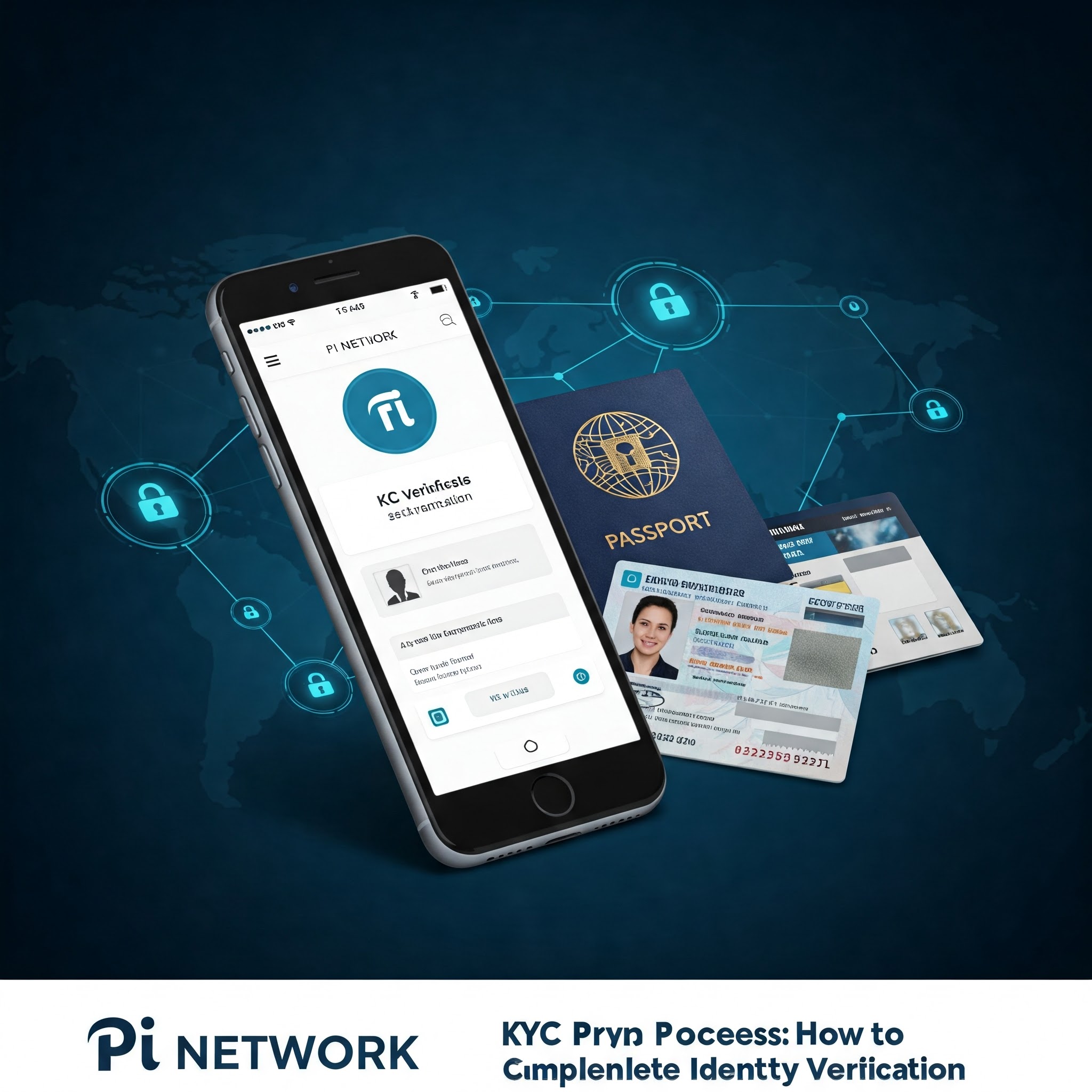The cryptocurrency world is filled with innovation, opportunity, and, unfortunately, scams. Among the many projects vying for attention, Pi Network has emerged as a unique player, promising to make cryptocurrency mining accessible to everyone through mobile devices. However, its unconventional approach has sparked debates: Is Pi Network legit, or is it just another scam? In this comprehensive guide, we’ll explore everything you need to know about Pi Network, its legitimacy, and whether it’s worth your time.
Table of Contents
- Introduction to Pi Network
- How Pi Network Works
- Arguments Supporting Pi Network’s Legitimacy
- Concerns and Red Flags
- Pi Network vs. Known Scams
- How to Protect Yourself
- Conclusion
- FAQs
1. Introduction to Pi Network
Pi Network is a cryptocurrency project that aims to make mining accessible to everyday users. Unlike Bitcoin or Ethereum, which require expensive hardware and technical expertise, Pi Network allows users to mine its native cryptocurrency, Pi coin, using just their smartphones. The project was founded by a team of Stanford graduates, including Dr. Nicolas Kokkalis and Dr. Chengdiao Fan, who have a strong background in computer science and blockchain technology.
Key Features of Pi Network
- Mobile Mining: Users can mine Pi coins using their smartphones without draining battery or data.
- Decentralization: Pi Network aims to create a decentralized cryptocurrency ecosystem.
- User-Friendly: The app is designed to be simple and accessible, even for non-tech-savvy users.
2. How Pi Network Works
Pi Network operates differently from traditional cryptocurrencies. Here’s a breakdown of its unique approach:
Mining Process
- Users download the Pi Network app and start mining by simply pressing a button every 24 hours.
- Mining does not require computational power, making it energy-efficient.
- Users can increase their mining rate by inviting friends to join the network (referral system).
Security Circles
- Pi Network uses a concept called Security Circles, where users vouch for each other to build trust within the network.
- This system helps prevent fake accounts and ensures the network’s integrity.
Consensus Algorithm
- Pi Network uses the Stellar Consensus Protocol (SCP), a proven and secure algorithm that doesn’t rely on energy-intensive mining.
3. Arguments Supporting Pi Network’s Legitimacy
Despite the skepticism, there are several reasons why Pi Network might be legitimate:
Table 1: Arguments Supporting Pi Network’s Legitimacy
| Argument | Explanation |
|---|---|
| Transparency | The Pi Network team is open about their goals, progress, and roadmap. |
| Growing User Base | Millions of users worldwide are actively mining Pi coins, indicating trust in the project. |
| No Financial Risk | Users don’t need to invest money to mine Pi coins, reducing the risk of scams. |
| Technological Foundation | Uses the Stellar Consensus Protocol, a proven and secure algorithm. |
Transparency
The Pi Network team has been transparent about their goals and progress. They regularly update users through official channels, including the Pi Network app and their website.
Growing User Base
With millions of active users, Pi Network has built a strong community. This level of adoption is a positive sign for the project’s legitimacy.
No Financial Risk
Unlike many scams that require upfront investments, Pi Network doesn’t ask users to spend money. This reduces the risk of financial loss.
Technological Foundation
The use of the Stellar Consensus Protocol (SCP) ensures that Pi Network is built on a secure and scalable foundation.
4. Concerns and Red Flags
While there are arguments in favor of Pi Network’s legitimacy, there are also concerns that cannot be ignored:
Table 2: Concerns and Red Flags About Pi Network
| Concern | Explanation |
|---|---|
| No Tradable Value | Pi coins are not yet tradable on major exchanges, raising doubts about their real-world value. |
| Centralized Control | The Pi Network team has significant control over the project during its early stages. |
| Lack of Clear Utility | The practical use cases for Pi coins are still undefined. |
| Skepticism from Experts | Some crypto experts question the project’s long-term viability. |
No Tradable Value
As of now, Pi coins cannot be traded or sold on major exchanges. This lack of liquidity raises questions about their real-world value.
Centralized Control
During its early stages, Pi Network is highly centralized, with the core team making all major decisions. This contradicts the decentralized nature of most cryptocurrencies.
Lack of Clear Utility
The practical use cases for Pi coins are still unclear. Without real-world applications, it’s hard to assess the coin’s long-term potential.
Skepticism from Experts
Some cryptocurrency experts have expressed doubts about Pi Network’s feasibility and long-term viability.
5. Pi Network vs. Known Scams
To better understand Pi Network’s legitimacy, let’s compare it to known cryptocurrency scams like BitConnect and OneCoin:
Table 3: Pi Network vs. Known Scams
| Aspect | Pi Network | Known Scams (e.g., BitConnect) |
|---|---|---|
| Financial Investment | No money required to mine Pi coins. | Required users to invest money upfront. |
| Transparency | Clear roadmap and team information available. | Often lacked transparency about team and goals. |
| Technology | Uses Stellar Consensus Protocol, a proven algorithm. | Relied on vague or non-existent technology. |
| User Base | Millions of active users. | Often had inflated or fake user numbers. |
Key Differences
- No Financial Investment: Pi Network doesn’t ask users to invest money, unlike scams that require upfront payments.
- Transparency: Pi Network’s team and goals are transparent, while scams often hide behind anonymity.
- Technology: Pi Network uses a proven consensus algorithm, whereas scams often rely on vague or non-existent technology.
6. How to Protect Yourself
If you decide to engage with Pi Network, here are some tips to stay safe:
Table 4: Tips to Protect Yourself
| Tip | Explanation |
|---|---|
| Avoid Sharing Sensitive Information | Never share private keys, passwords, or sensitive data with third parties. |
| Beware of Third-Party Apps | Only use the official Pi Network app to avoid scams. |
| Stay Updated | Follow official Pi Network channels for updates and announcements. |
| Do Your Own Research | Always verify information and be cautious of unrealistic promises. |
7. Conclusion
Pi Network is a unique cryptocurrency project that has attracted millions of users worldwide. While there are arguments supporting its legitimacy, such as its transparent team and growing user base, there are also valid concerns, including the lack of tradable value and centralized control. Ultimately, whether Pi Network is legit or a scam depends on its ability to deliver on its promises and achieve real-world utility.
As with any cryptocurrency project, it’s essential to do your own research and exercise caution. Pi Network may have potential, but it’s not without risks.
8. FAQs
1. Is Pi Network safe to use?
Yes, Pi Network is safe to use as long as you download the official app and avoid sharing sensitive information.
2. Can I sell Pi coins in 2025?
As of now, Pi coins are not tradable. However, the Pi Network team has plans to launch the mainnet, which could enable trading in the future.
3. What are the risks of mining Pi coins?
The main risks include the lack of tradable value and the possibility that Pi Network may not achieve its goals.
4. How does Pi Network make money?
Pi Network doesn’t currently generate revenue. The project is in its early stages, and its long-term monetization strategy is unclear.




